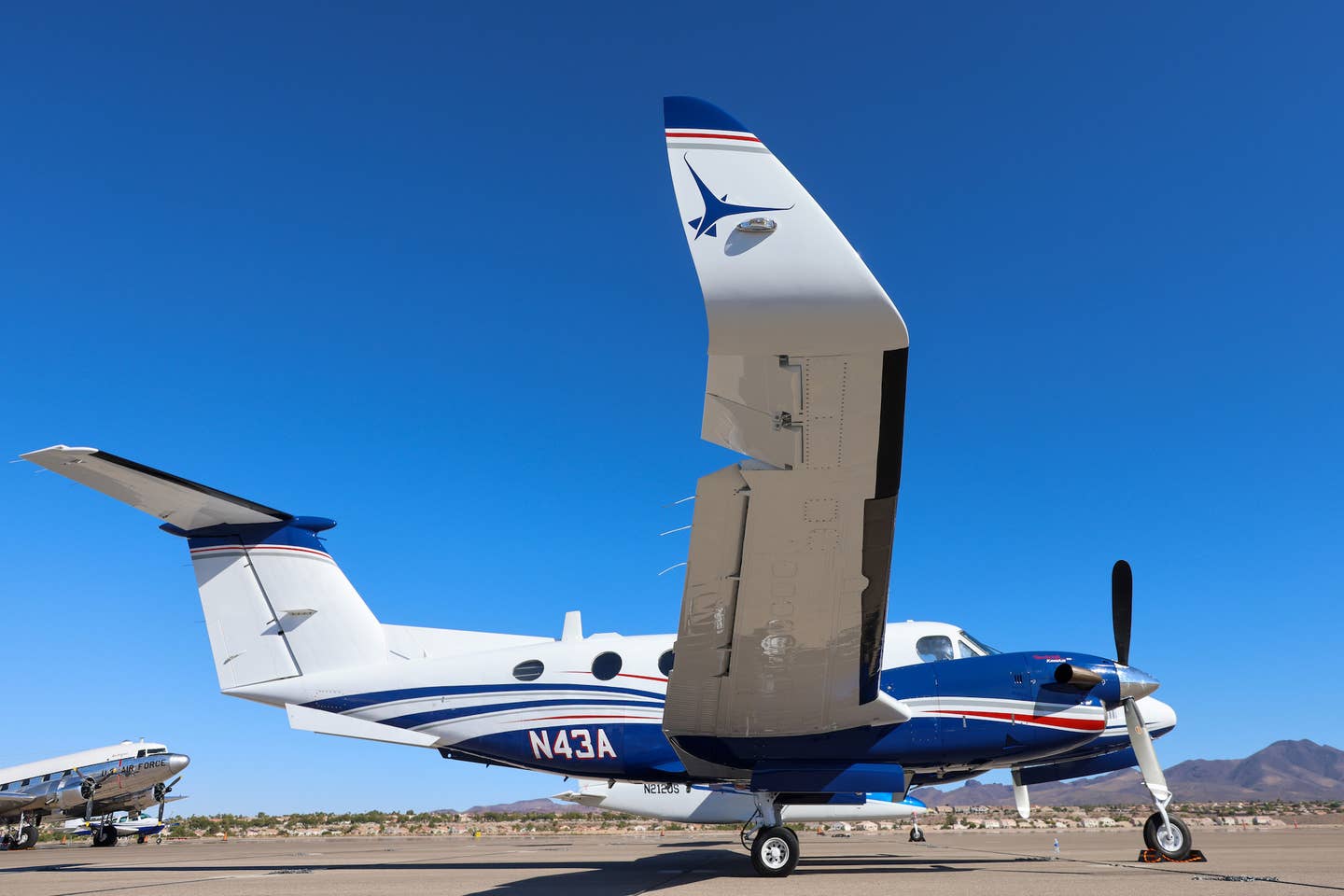
The Smartwing active winglets are undergoing flight test on a Dynamic Aviation King Air 200. Stephen Yeates
Smartwing technology from Tamarack Aerospace so far has remained focus on the Cessna Citation 525 series—until now.
At the National Business Aviation Association’s Business Aviation Conference & Expo (NBAA-BACE), Tamarack’s founder and CEO Nick Guida gave FLYING a preview of the company’s latest project—a Beechcraft King Air 200 modified with its active winglet technology.
The company also plans to test and produce its Smartwing for the 350 series.
Guida hopes to make inroads into military and surveillance markets with the new STC, which is still under development.
“Initially, before I had invented [the Smartwing technology],” he said. “I was a consultant aerospace engineer—a DER—that I provided services to companies for loads, structures, damage tolerance, fatigue, flight test.
“I had a pretty wide range of understanding.”
“I was helping Boundary Layer Research, who put the winglets on the [King Air] 200, and the 90, and the 300—and those are the winglets actually being used…on the 200, the 250, and the 90GT. But they’re passive winglets.”
From Passive to Active
“Operators were reporting some benefits in climb, because if you put an endplate to an existing wing, you’re going to get an [effective] aspect ratio increase,” Guida said.
“The question is, can you use it at the lift coefficients that you normally operate?
”Typically at low lift coefficients, you’re not going to get a benefit from winglets, because the induced drag term is much lower…if you have low lift coefficients, most of the drag is from form drag rather than induced drag.”
Pilots who operate aircraft at lower airspeeds and higher altitudes—for example, those flying surveillance missions, loitering high for long periods of time—operate at the higher lift coefficients for which winglets produce the greatest returns. Guida anticipates a 10 percent improvement in drag, leading to increased loiter times for these missions with the winglets installed.
The winglets will also translate into roughly a 15 percent improvement in climb rate, and a smoother ride in turbulent air.
Total weight penalty is expected to be about 90 lbs, as the system is a bit more complex than those installations on the 525 series. The pricing will reflect that higher complexity but has not yet been set. The 525 package goes for between $220,000 and $230,000.
The company exited bankruptcy earlier this year. The company has 150 installations flying currently on Citations.

Sign-up for newsletters & special offers!
Get the latest FLYING stories & special offers delivered directly to your inbox






